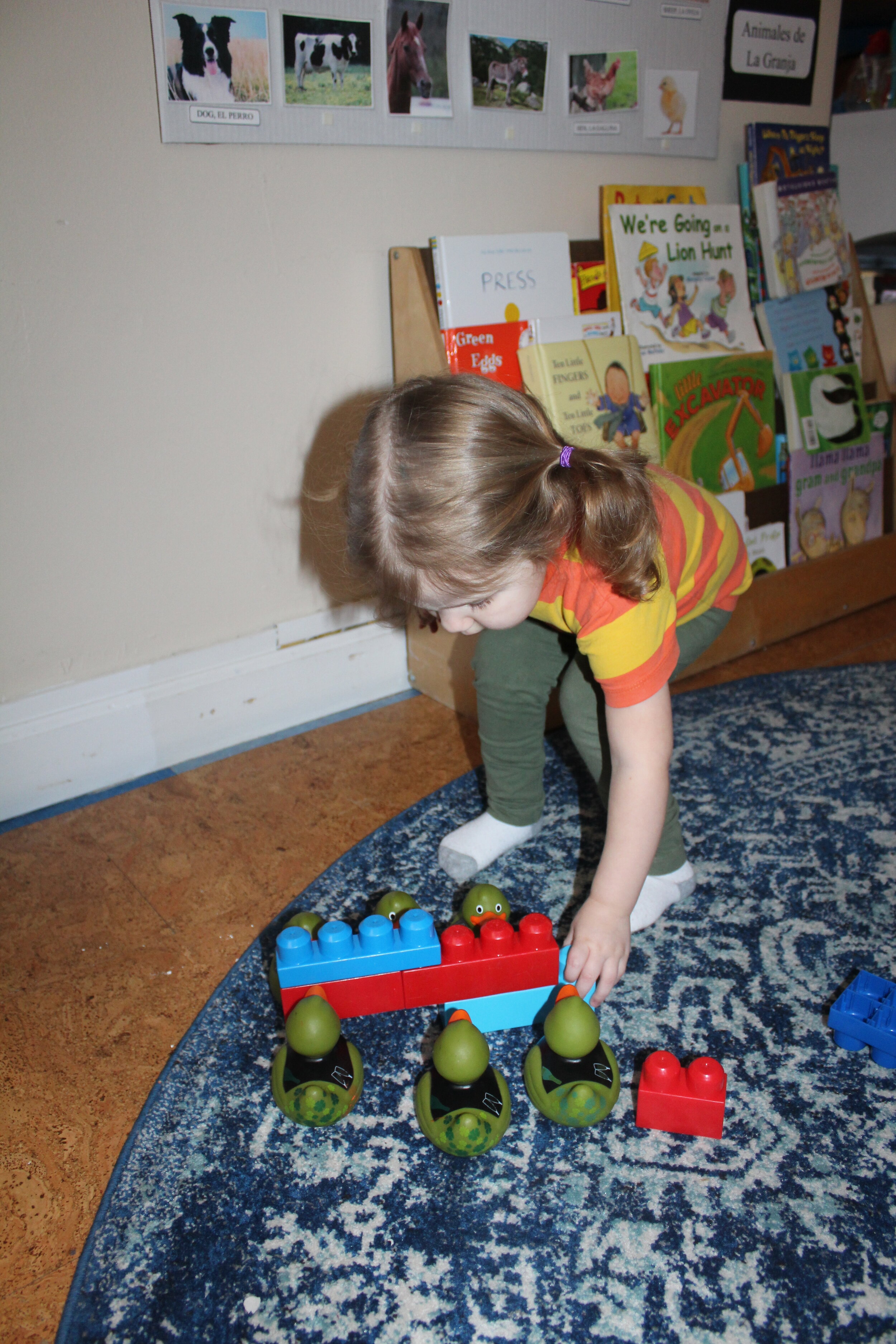Cognitive, Geometric Shapes, Memorization, Counting, and Colors
The teacher articulated the shapes, turned the erasable board around, and erased one of the geometric shapes. As she turned it around, she asked the children "Which shape is missing?" The same process was with the balloons. She erased one without them seeing which one, and asked, "Which color is missing?" These activities are not only fun, interactive, and educational, but they enable children to practice their thinking skills.
Blocks/Manipulative Toys
Manipulatives are smaller-sized pieces that children can easily manipulate. We used some in counting activities in the classroom. Each type offers opportunities for tactile and kinesthetic experiences. These types of experiences are the best kind for young children because they can utilize their body’s natural need to move — the many benefits of manipulatives parallel blocks and building materials. Manipulatives often require grasping, twisting pieces together, and pulling pieces apart.
For this reason, they aide in the development of hand-eye coordination and hand strength. But the benefits don’t stop there. Manipulative toys also encourage self-talk, discussion, and language development.
Collaboration/Socialization
Kieran and Emily were at the manipulative center sharing the space. They were playing cooperatively, as they quietly interacted with the materials. They each were taking turns placing a puzzle piece on the puzzle board. Socialization is an integral part of early childhood. How children behave during play and how they respond to that behavior is essential to their social development.
Dramatic Play/sOCIALIZATION/IMAGINATION/COMMUNICATION
Dramatic play is the everyday make-believe games children naturally enjoy. The child might incorporate props or imagine simple scenarios. Dramatic play is vital to your child's development, supporting intellectual and verbal skills.
Teacher: "Where are you?"
Teagan: "Teagan House!"
Annabelle: "We having a party!"
Teacher: "Who is going to the party?"
Alexandra: "Me!"
Teacher: "Do you have food at the party?"
Teagan: "Yes, hot dog!"
Alexandra: "Cucumbers!"
Teagan pretended to turn on the music and began to sing. Teagan and Annabelle sang Jingle Bells.
The scene changed when two children moved the chairs, and the others followed; the chairs formed a line.
Teacher: "Where are you going?"
Children: "To the train!" Ophelia and Ericksen joined the other children.
The teacher gave each child a piece of paper, pretending to be a ticket for the train.
Annabelle: "We going to the party at Granpa Larry's house.
Science
The children are learning about objects that sink and float.
They noticed that something heavy would sink, and something light will float. However, the same shape of an object can float or sink; for example, a plastic spoon (floats) and a metal spoon (sinks). The children appeared eager, as they investigated different objects.

























